MENU
Introduction: The Padel Boom in the UK
Padel, often described as a fusion of tennis and squash, is taking the UK sports scene by storm. With its fast-paced rallies, fun social aspect, and relatively small playing area, padel has become one of Europe’s fastest-growing sports. The UK is no exception: private clubs, leisure centres, and even public parks are now investing in new courts, bringing padel court planning permission UK into the spotlight. Demand is high, and so is the interest in navigating the padel court application process successfully.
Padel’s Growing Global Popularity
Although enthusiasm for padel is soaring in the UK, this trend is part of a much larger international movement. Originating in Mexico in the late 1960s, the sport quickly spread to Spain, where it is now second only to football in popularity. Today, padel is played in over 90 countries worldwide, with rapid expansion noted in Argentina, Italy, Sweden, and the Middle East. The endorsement of high-profile tennis players—like Andy Murray and Rafael Nadal, who have invested in padel clubs—has further elevated its global credibility and helped drive the sport’s continuing growth.
UK Padel Growth by the Numbers
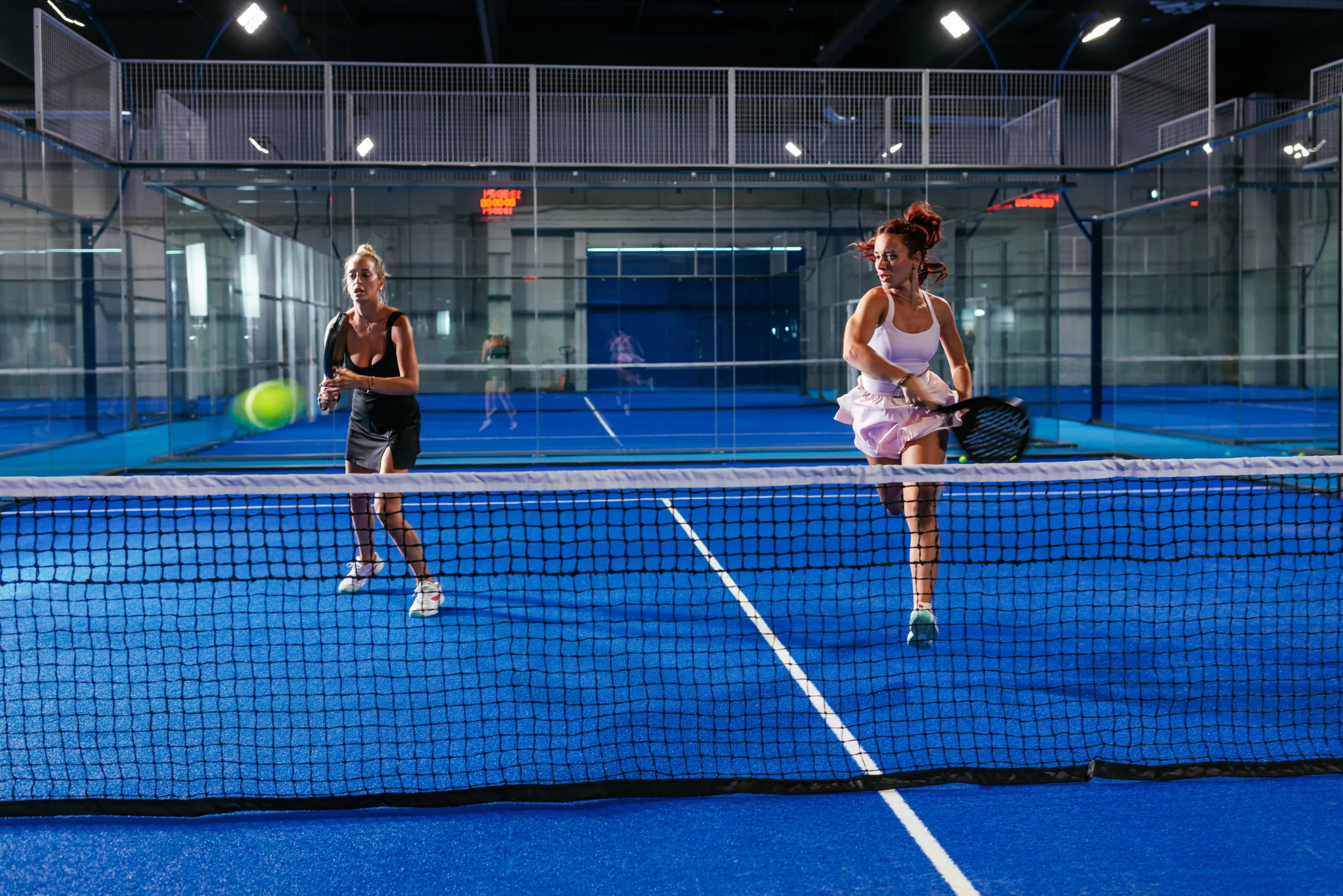
Recent statistics show that the number of padel courts in the UK has more than doubled over the past few years, surpassing 250 active courts nationwide. In response to this surge, the Lawn Tennis Association (LTA) has set a target of supporting the development of at least 400 courts by 2025. Sports analysts project a 30% annual increase in UK participation, reflecting both strong consumer demand and a promising investment opportunity.
Why Padel is Taking Off Nationwide
One reason for the sport’s rapid uptake is accessibility: with smaller rackets and enclosed walls that keep the ball in play, beginners and advanced players alike find padel enjoyable. Another major draw is the social aspect; doubles matches foster camaraderie among friends, families, and colleagues. Padel also offers a space-efficient design, allowing multiple courts to be built in a relatively small area—making it an attractive proposition for property developers and sports facility operators.
Beyond its growing status as Europe’s fastest-growing sport, padel is also considered highly inclusive. Many modern courts are designed to be wheelchair-friendly, ensuring that people of varying abilities can enjoy the game on an equal footing. .
Demand for padel courts currently far exceeds the available supply. For example, in certain parts of London, prospective players reportedly face up to a one-month waiting period just to secure a court booking, underscoring the sport’s rapid rise and limited capacity.
Surge in Planning Applications for Padel Courts
With padel firmly on the rise, local councils across the UK have seen a noticeable surge in planning applications. Sports clubs, community groups, and commercial developers are keen to invest. Common motivations include generating fresh revenue streams, strengthening local community engagement, and anticipating sustainable, long-term returns as the LTA’s support and the sport’s popularity continue to increase. With demand outstripping supply, this also presents a potentially lucrative opportunity for savvy investors. At Planning By Design, we have seen a significant increase in the number of investors contacting us about potential padel court locations.
Do You Need Planning Permission for a Padel Court?
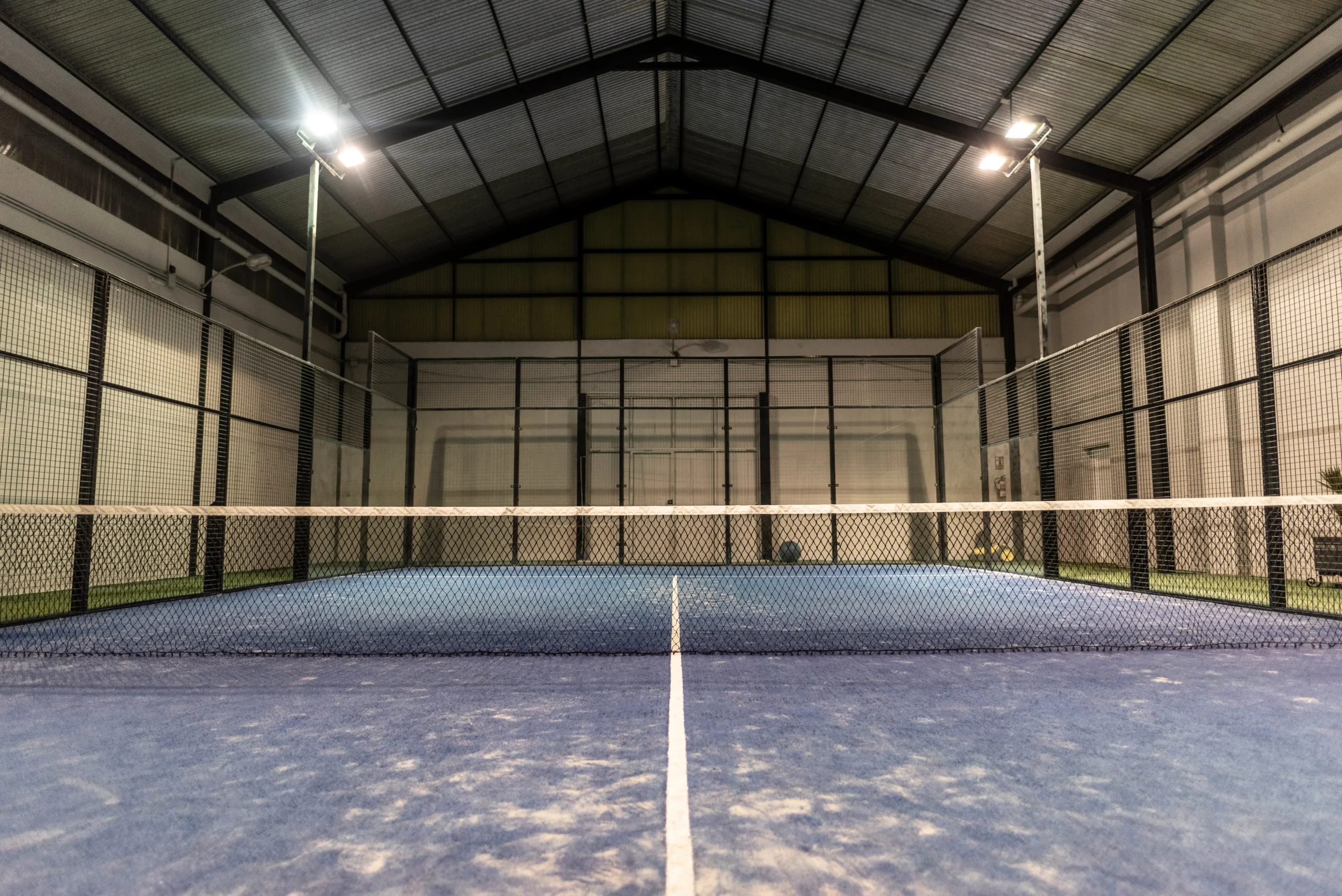
In most cases, planning permission is a must. A padel court often involves permanent fixtures like glass walls, lighting columns, and protective fencing—structures that can impact the surrounding environment or local area. Constructing a court can also change the usage of the land or building, which is why local authorities will want to review the project. If you’re researching how to build a padel court or working out the padel court cost UK, factoring in planning permission and any associated fees is essential.
Building a Padel Court: Conversion vs. New Build

When it comes to creating a padel court in the UK, there are two main approaches: converting an existing building or starting a completely new build. Each option presents unique advantages, challenges, and planning implications, and understanding these differences can help you decide which route is best for your location, budget, and vision.
Conversion (Change of Use)
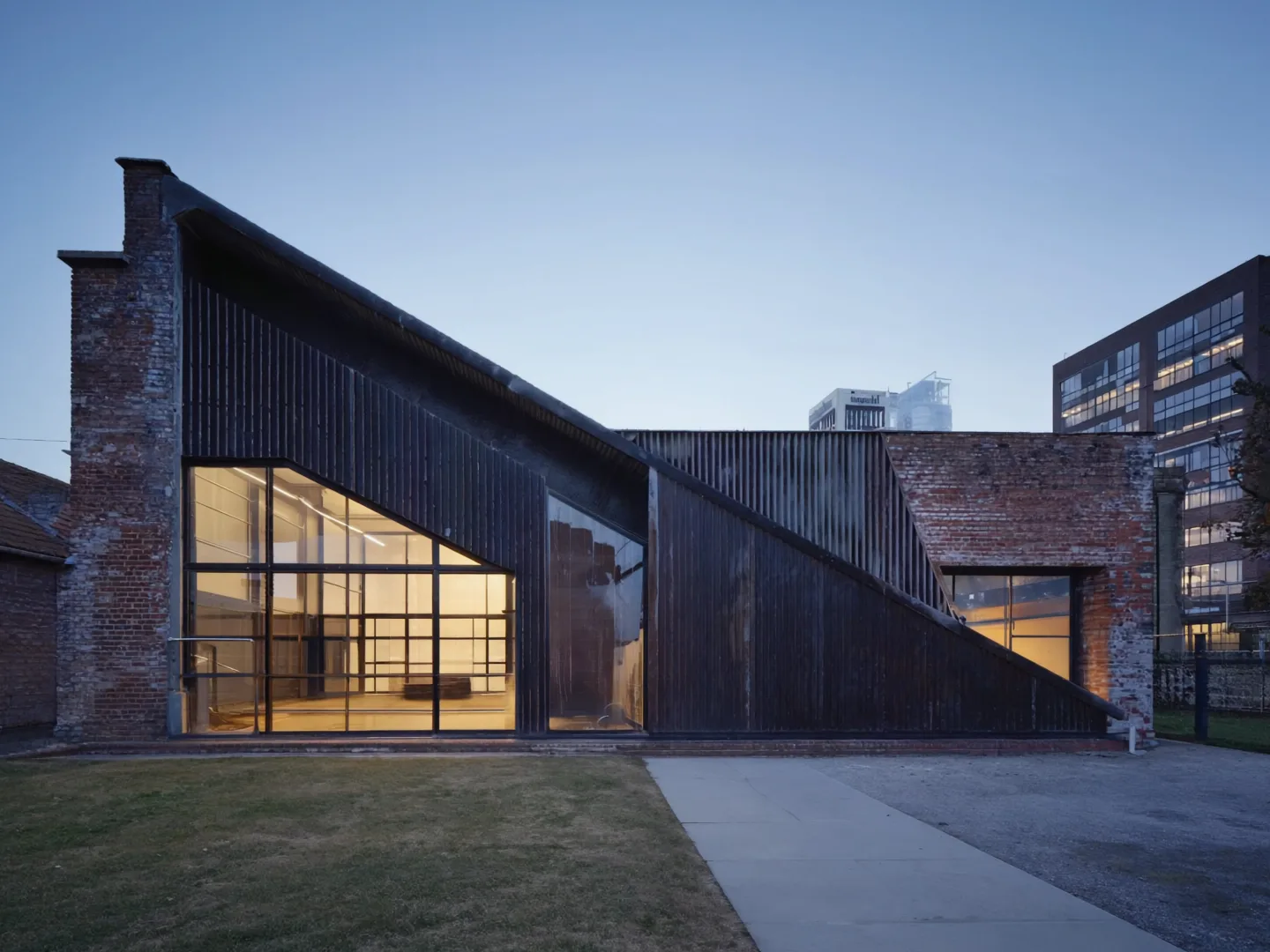
Reusing a sports hall, warehouse, or other suitable structure often proves more cost-effective and quicker than building from scratch. However, any prospective building must meet certain requirements, such as a minimum ceiling height of around six to eight metres, which ensures safe gameplay and accommodates the ball’s trajectory. Buildings in decent condition may require fewer renovations, but older structures could demand more extensive upgrades to their roof supports, flooring, or general integrity. This is especially true if there are issues like asbestos or outdated fire safety measures that can delay both planning and construction.
In addition to ensuring the building itself is structurally sound, adequate ventilation and fire safety systems are crucial, as indoor padel courts can create higher humidity levels and need clear protocols to protect players. Conversions also raise questions around noise and acoustics, especially if the building is near residential areas. Installing acoustic panelling, insulation, or other sound-dampening solutions might be necessary to prevent noise complaints. Even when modifying a structure internally, planning permission may still be required if the building’s official use class is changing—from a warehouse to a sports facility, for instance. Carefully reviewing local regulations and speaking with planning authorities early in the process can mitigate surprises later on.
Although you may benefit from reduced construction work and potentially open the facility to the public sooner, it is wise to remember that not all spaces will be compatible with a padel court’s design requirements. Nonetheless, when a suitable building is available, conversion can be as much as 20 to 30 percent cheaper than starting a new build, provided you account for any unforeseen structural issues.
What makes an ideal site for a change of use to padel courts?
An ideal conversion site should have a ceiling height of at least six to eight metres and minimal structural defects, reducing the need for costly renovations. Easy access for vehicles and pedestrians is also important, as you’ll likely want to attract regular footfall. Proximity to public transport can further widen your potential user base. Ideally, the structure will already be designated or permitted for leisure or recreational use, simplifying the planning process. Above all, a location that resonates with local community interest and offers ample parking or nearby amenities will help ensure a steady stream of players.
New Build
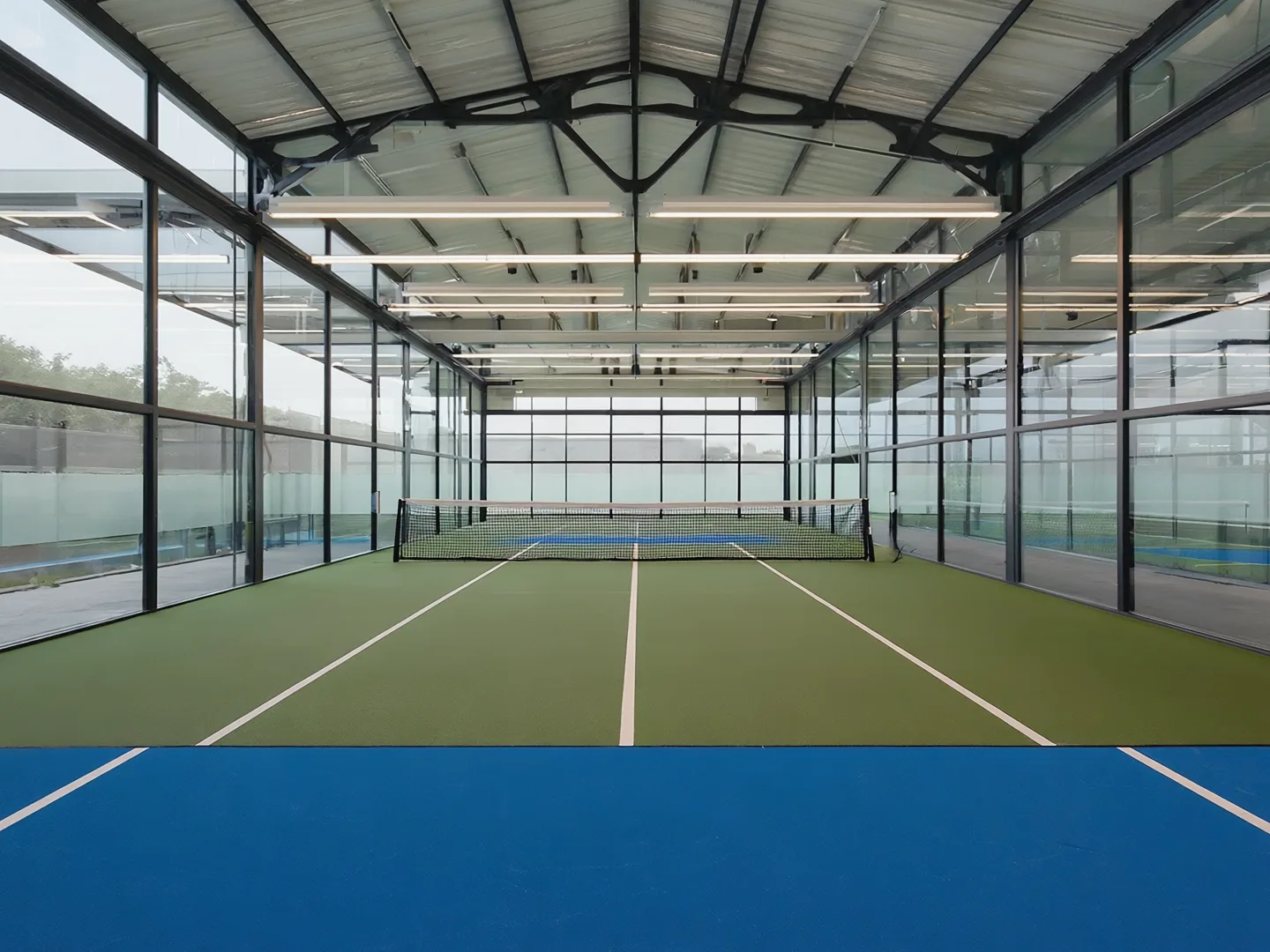
Constructing a padel court from scratch on a vacant plot or brownfield site offers maximum design flexibility, allowing you to customise everything from court orientation and materials to the addition of ancillary spaces like spectator seating, changing rooms, or a café. This freedom can be particularly appealing if you plan to operate multiple courts or envision expanding your facilities over time. However, a new build typically involves a more comprehensive planning application process, often requiring environmental impact assessments and traffic evaluations, especially if your chosen site is located near protected land or in a densely populated residential area.
Another consideration is the initial outlay of costs. Since you are creating the entire infrastructure from the ground up, you will likely face higher expenses for ground preparation, drainage, access roads, and utility connections. Project timelines can also extend significantly; whereas a conversion might allow you to open within a few months, a completely new build can take anywhere from six to twelve months or even longer, depending on project complexity and the speed of local council reviews.
Despite these challenges, a new build can serve as a long-term investment that is more adaptable to future demands. Expanding from one or two courts to several is often simpler when you control the overall site layout. Investing in modern materials and sustainable technologies at the outset can also elevate your facility’s appeal, enhance its environmental credentials, and potentially reduce operating costs over time.
What makes an ideal site for new build padel courts?
A well-chosen plot should allow for multiple courts and essential facilities like parking, seating, or even a clubhouse. You’ll want to consider strategic court orientation to minimise noise and light spill for neighbours, and make sure the site isn’t subject to significant environmental constraints such as flood risks or conservation restrictions. Good visibility from main roads can help market your venue to passersby, and straightforward transport links will encourage players to visit regularly. If you anticipate expanding in the future, look for plots large enough to accommodate potential growth without having to relocate.
What’s Required to Get Planning Permission
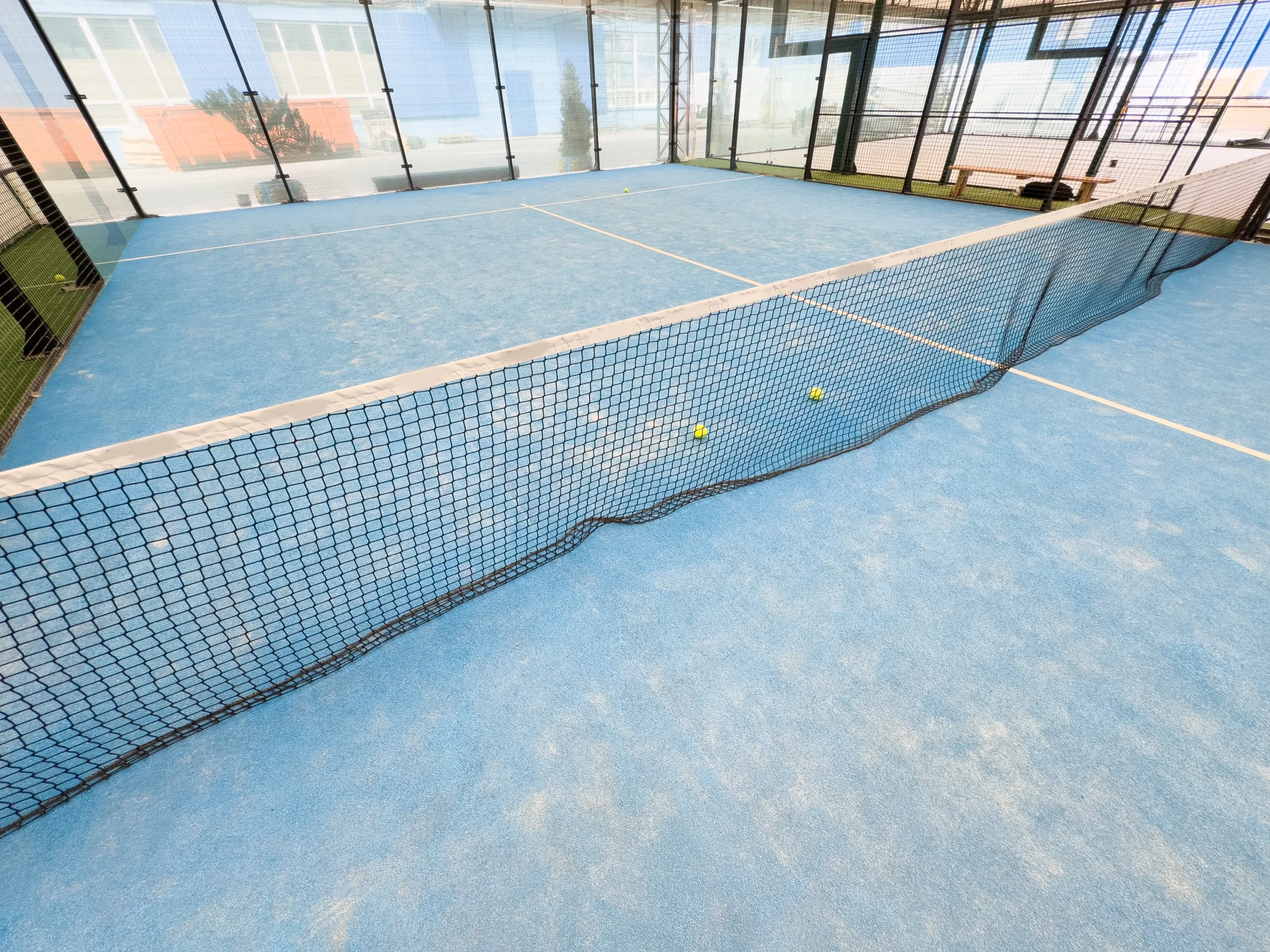
Securing planning permission hinges on a few key factors. First, you’ll need detailed plans and drawings, including site layouts, court dimensions, and the proposed construction materials. Local authorities typically request environmental and noise assessments to determine any potential impact on residential areas, wildlife habitats, or protected species. In addition, consulting the community early can help iron out concerns. Hosting public forums or publishing local notices fosters transparency and can significantly improve your chances of approval.
It is always wise to seek the advice of a planning consultant to review your proposed development thoroughly before carrying out any construction. Taking this precaution helps you avoid having to demolish unpermitted work later on, which can lead to unexpected costs and significant delays.
Padel Court Feasibility: Why It’s Essential to Check Before Leasing or Purchasing
Before committing to a lease or purchase agreement for a potential padel court project, it’s crucial to evaluate the likelihood of obtaining planning permission. Padel courts often have unique structural and environmental considerations—such as ceiling heights, noise mitigation, and lighting—that can complicate approvals. If you’re looking for quick answers, a planning appraisal or pre-planning advice can provide a thorough yet swift assessment without requiring detailed drawings or formal proposals.
An RTPI-accredited town planner will review relevant planning policies, past site history, and any constraints, offering expert insight in a matter of days—rather than the typical six to eight weeks. After conducting initial research, your planner will schedule a telephone consultation to discuss key findings, address questions, and outline recommended next steps. By the end of this consultation, you’ll know whether planning permission is needed for your proposed padel court, which challenges you might face, and how best to navigate them.
Taking these steps early can spare you the expense and frustration of having to abandon or alter plans later on if the site proves unsuitable. It also gives you the opportunity to negotiate lease or purchase terms more confidently, knowing exactly what the planning implications are.
Another approach to reduce risk is to structure your purchase or lease agreement so that completion depends on obtaining planning approval. If the vendor agrees to this arrangement, you can sign a contract stating that if planning is granted, the sale or lease proceeds as usual. However, if permission is refused, you only lose the cost of the planning application rather than being obligated to a property you cannot develop. This contingency can be invaluable when interest in padel courts is high, but the suitability of any given site is not yet confirmed.
Top Mistakes to Avoid During the Planning Stage
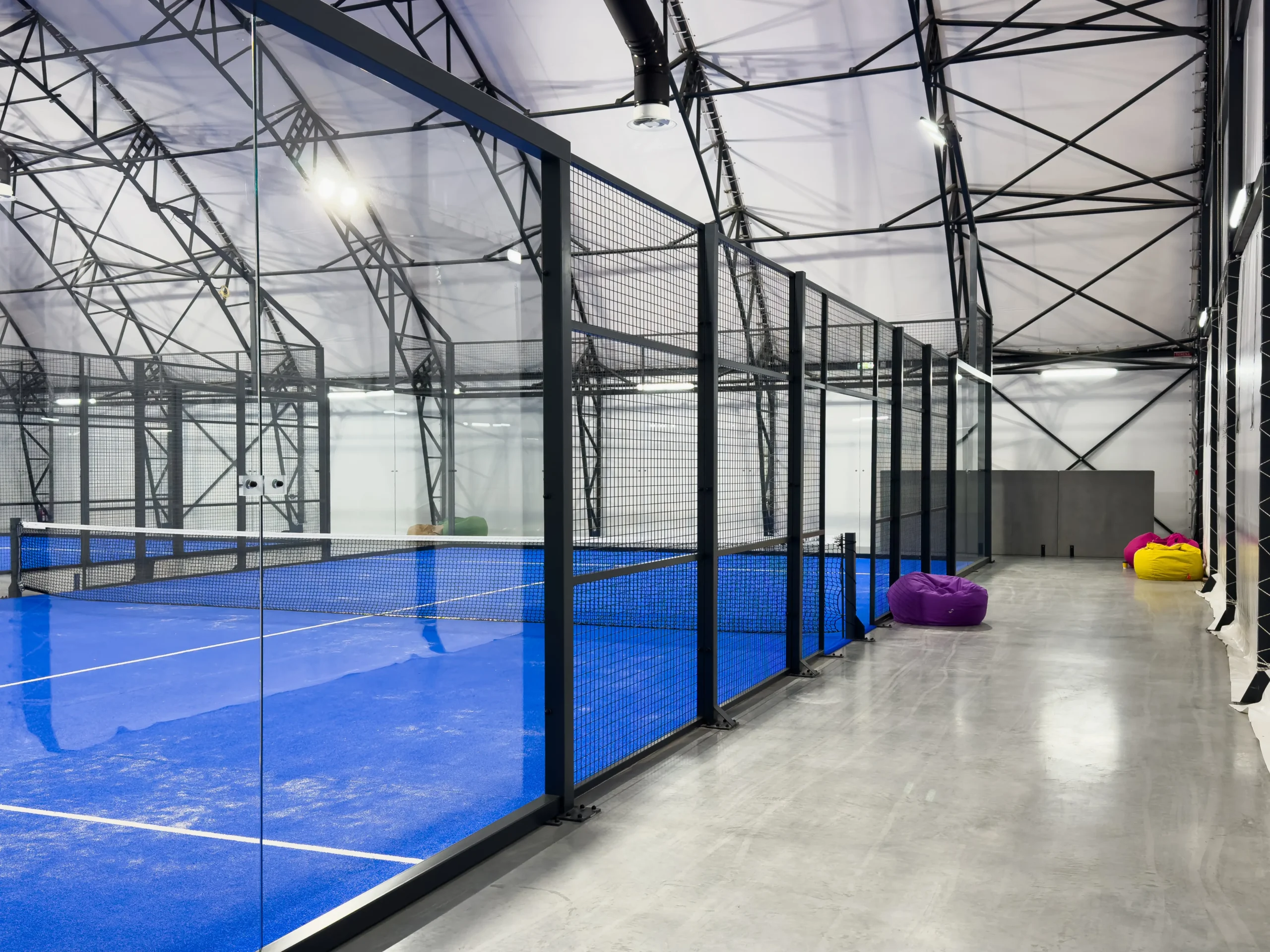
Underestimating Costs
Hidden expenses such as drainage, legal fees, and public consultations can quickly inflate a budget. It’s often wise to set aside a contingency fund, typically 10–15% of the total projected costs, to handle any unexpected fees.Skipping Early Consultations
Inadequate engagement with local stakeholders can lead to objections, delays, and potential refusals. By hosting open discussions and showcasing how a court will benefit the area, you can alleviate concerns and maintain trust.Poor Environmental Assessment
Ignoring environmental regulations or wildlife surveys is a direct route to rejections or legal disputes. Aligning your project with LTA guidance and thoroughly assessing the environmental impact from the outset can help avoid setbacks.
Timing and Project Management
When scheduling the development of a padel court, a well-structured timeline is crucial. Feasibility studies can take a month or two, while the final planning approval and construction phases may last up to 6–12 months, depending on complexity. You’ll also want to consider seasonality; building in winter can slow progress due to adverse weather, and ideally, courts should be ready for the peak interest in spring or summer.
Sustainability and Green Initiatives

Taking an eco-friendly approach can significantly enhance your project’s appeal, both in the eyes of local councils and within the wider community. Many planning authorities now prioritise developments that demonstrate strong sustainability credentials, so investing in green initiatives can streamline approvals and build goodwill among local residents.
One effective strategy is to use recycled glass for the court walls and low-impact LED lighting, both of which help reduce the court’s carbon footprint. LED fixtures, for instance, can consume up to 70% less electricity than traditional halogen or metal halide lights, leading to lower long-term energy costs. In addition, LED systems tend to have a longer lifespan, cutting down on the frequency of replacements and further minimising waste.
Developers can also incorporate renewable energy solutions—such as solar panels on nearby buildings or parking structures—helping to offset the electricity needed for lighting and other amenities. Beyond energy efficiency, water conservation measures like rainwater harvesting can be integrated for landscape irrigation or court maintenance, especially important if you plan to install adjacent greenery or gardens.
To offset broader environmental impacts, consider designing green corridors and buffer zones that help preserve or enhance local biodiversity. Planting native trees, shrubs, and wildflowers around the facility not only visually integrates the court into its surroundings, but also creates habitats for birds, pollinators, and other wildlife. You might introduce living walls, rooftop gardens, or permeable surfaces in parking areas to manage stormwater runoff more effectively, preventing flooding and reducing strain on local drainage systems.
From a regulatory standpoint, demonstrating a commitment to eco-friendly materials and sustainable infrastructure aligns closely with recommendations from bodies like the Lawn Tennis Association (LTA), which advocates responsible development practices. It also resonates with many local councils’ environmental policies, improving the likelihood of a smoother planning application process. In some cases, these sustainable features can qualify you for green-building certifications or local grants that offset part of the development costs.
By weaving sustainability into every phase—from design and construction to day-to-day operation—you not only lower the overall environmental footprint of your padel court but also create a future-proof facility. As public awareness of climate change grows, a padel court that showcases best practices in eco-responsibility could become a local benchmark for sustainable sports venues and an attractive destination for environmentally conscious players.
Common Planning Challenges and How to Overcome Them
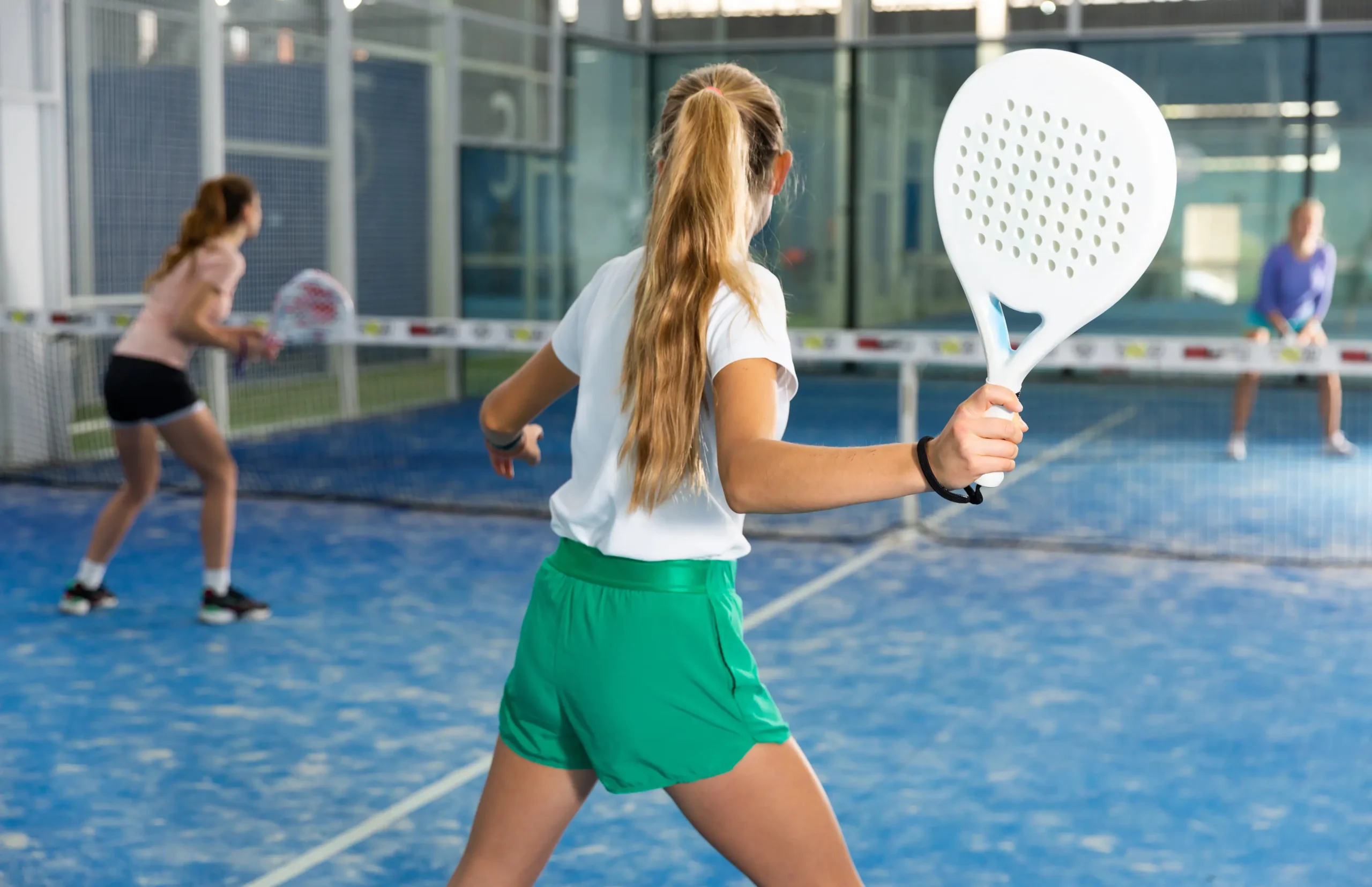
Many hurdles can arise once you start the padel court application process, ranging from noise complaints to aesthetic concerns. Installing noise-reducing materials or scheduling limited usage hours helps limit disturbances, while directional LED lighting minimises light pollution. If the court’s appearance is a concern, landscaping and greenery can blend the facility seamlessly into the local environment. Budgeting realistically—from £20,000 to £70,000+ depending on materials and location—can also prevent financial constraints from stalling progress.
Temporary Permission
One emerging trend that addresses the scarcity and high value of land is the use of temporary permission for padel courts. Local councils can be reluctant to commit land to a single long-term use, especially given the overwhelming demand for available space. By seeking permission for a limited number of years—such as three or five—a developer can demonstrate that the land will not be permanently altered. This approach offers reassurance to councils that if padel courts are not successful, or if land use priorities shift, the space can revert to its previous designation. For the developer, securing temporary permission often results in a higher likelihood of approval. If the courts prove profitable and well-received by the community, councils are more inclined to grant permanent permission or extend the temporary arrangement, giving the investor added flexibility and potential for long-term growth.
Expert Insights from Aaron Basi, Town Planner at Planning By Design
“We’ve noticed a surge in padel court planning permission UK applications this year, reflecting the sport’s rapidly growing popularity. Early planning is crucial—factor in site assessments, community engagement, and compliance with both local and national guidelines. By addressing potential concerns upfront, developers can streamline the process and maximise their chances of success.”
Aaron Basi underscores how preparation and collaboration with neighbours, conservation groups, and sports bodies can make the difference between a swift approval and prolonged hurdles.
Padel Courts Case Study & Planning Permission Highlights
Explore an example planning portal submission below, featuring architectural drawings, feasibility report and planning statements. Discover more featured padel court projects in our portfolio.
Change of Use From Warehouse (Class 5) to Padel Tennis Centre (Class 11)
Conclusion: Planning Ahead for Padel Success
Padel’s rise in the UK mirrors a worldwide trend, and local facilities are tapping into a promising market that blends social engagement with fitness. Whether you plan on converting an existing building or starting fresh with a new build, understanding the essentials of padel court planning permission UK is key. By tackling cost estimates, environmental obligations, and community consultations early, you’ll be well-equipped to avoid common pitfalls and move forward with confidence.
Ready to get your padel court application process underway? Planning By Design is here to guide you. Contact us today for expert support at every stage, from feasibility studies and design proposals to final approval and construction.




